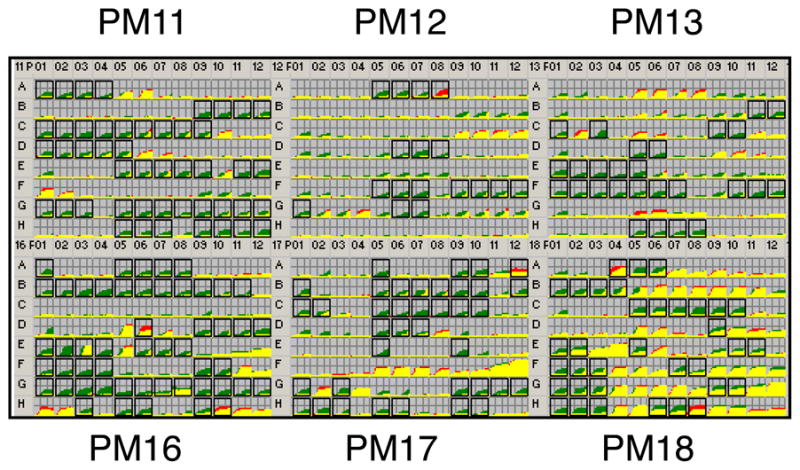Figure 2.

PM analysis for sensitivity to various antibiotics and toxic compounds. A complete catalog of the reagents used in the sensitivity panel (PM11-PM20) is listed in www.biolog.com. The wild-type and the liaS mutant were grown in a 96-well plate under different conditions. Growth kinetics were obtained with the OmniLog instrument, a video-based detection system that detects color development of tetrazolium dye due to bacterial respiration. Growth kinetics of wild-type and liaS mutant are superimposed using OmniLog software. The PM kinetic results show consensus data comparing the liaS mutant (IBS148, green) and its wild-type parental strain (UA159, red). A growth advantage by the parent is indicated by red, while a growth advantage by the liaS mutant is shown by green. When both strains have equal growth response or metabolisms in a well, the red and green kinetics overlaps and produces yellow color. Two independent growth kinetic experiments were performed. A box around a well indicates a difference in response that was observed in both the experiments. The phenotypic changes are listed in Table 1; for a complete list, please refer to Table S1.
